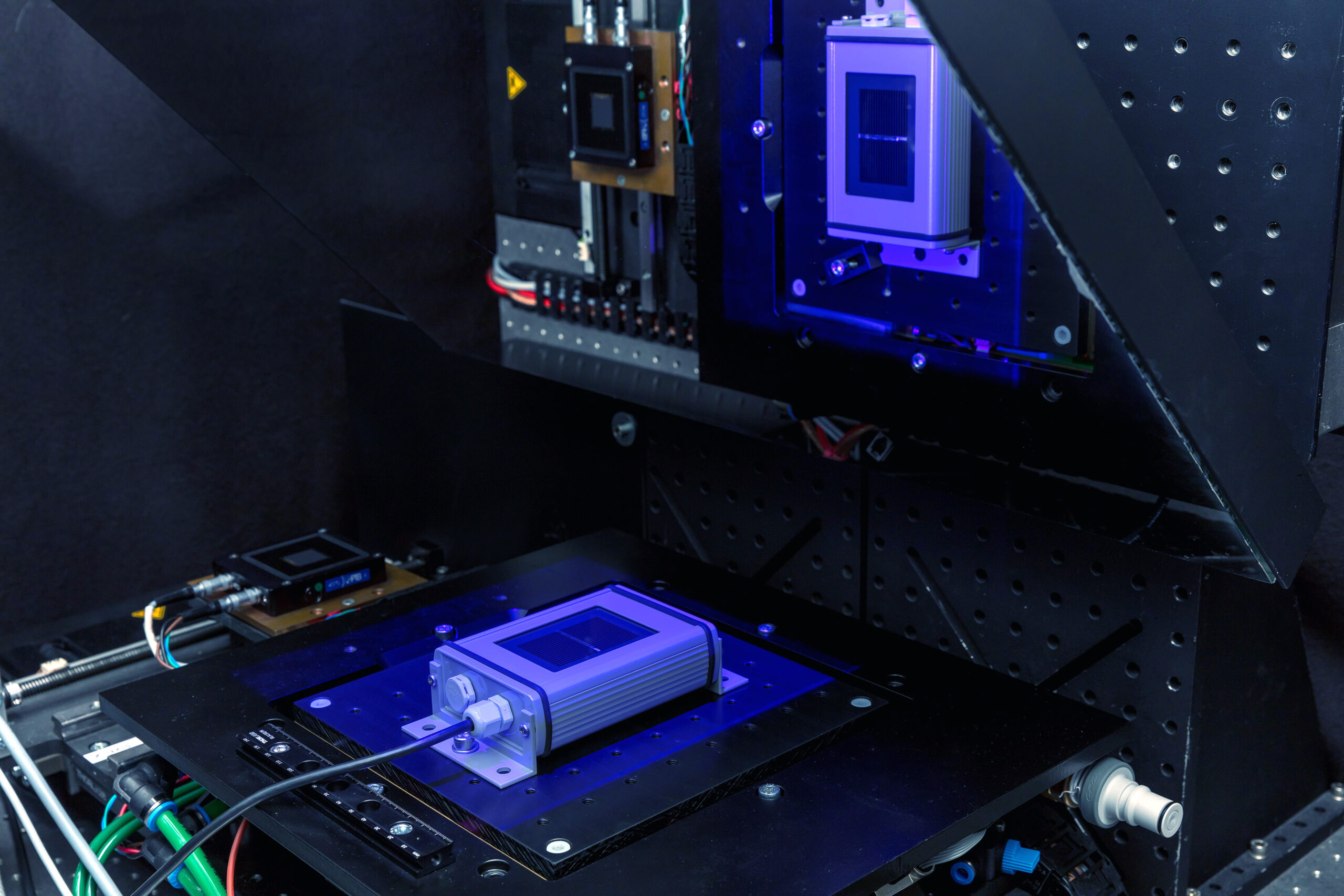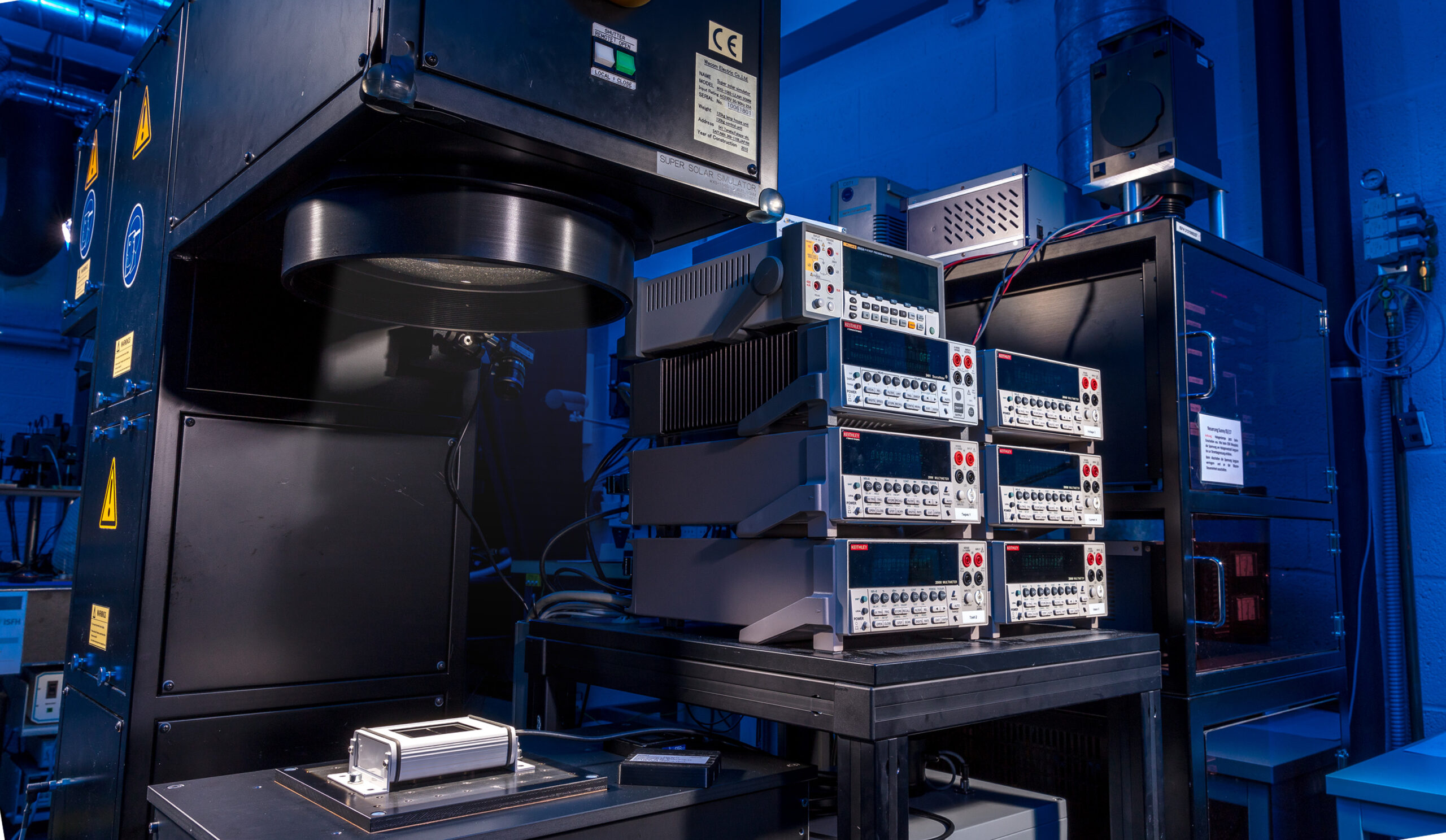ISFH CalTeC – sensors
Contact
Dr. Karsten Bothe
Tel.: +49(0)5151-999 425
E-Mail: sensors@caltec.isfh.de
Downloads
Calibration of a Solar Irradiation Sensor under the spectrum of a class AAA solar simulator

Measurement of the spectral responsivity of a solar radiation sensor
Calibration of Solar Irradiance Sensors
The ISFH CalTeC (Calibration and Test Center) is accredited by the German Accreditation Body (DAkkS) under the registration number D-K-18657-01-00 for the calibration of irradiance sensors according to DIN EN ISO/IEC 17025. The accreditation covers both the determination of the irradiance responsivity (sensor signal at a certain irradiance such as 100, 500 or 1000 W/m²) and the measurement of the spectral responsivity (SR) according to the IEC 60904 standards. All parameters are given with their uncertainty. In order to ensure traceability to SI units, all primary references are calibrated at Germany’s national metrology institute, the Physikalisch Technische Bundesanstalt (PTB).
The calibration of a solar irradiance sensor is usually performed under standard test conditions of 25 °C and an irradiance of 1000 W/m² with an AM1.5G spectrum. Since solar irradiance sensors are generally not actively cooled, they heat up in real operation. Therefore, our calibration includes the determination of the responsivity as a function of temperature if the radiation sensor is factory equipped with a temperature sensor. For this purpose, the sensor is illuminated with light of an AAA solar simulator and the output signal of the sensor is measured as a function of the temperature between 23 and 75 °C. Thus, the output signal can be determined at 25°C with very high precision. In addition, the customer receives information on how the radiation sensor functions at other temperatures.
If the output signal of the sensor does not change linearly with the irradiance, a calibration at different irradiances is recommended. For this purpose, we offer calibrations at 100, 500 and 1000 W/m².
For highest precision, we recommend a spectral mismatch correction. For this purpose, we measure the responsivity as a function of the wavelength. This measurement requires a sensor without measuring electronics or internal shunt resistor but can be performed on a specially prepared identical sensor.

